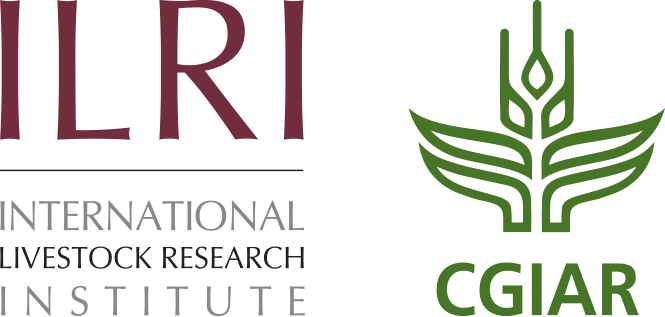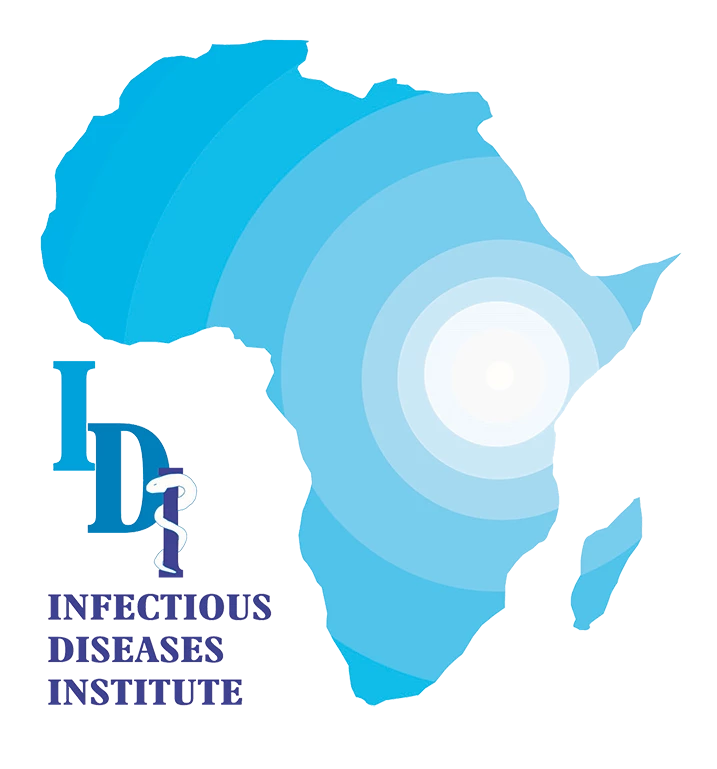Mosquito-Borne Diseases: From Long Time Foes to Emerging Threats
Arboviruses are a large group of viruses transmitted by insects such as mosquitos and ticks.
There has been unprecedented spread in the past 10-15 years of many of these, such as Chikungunya in 2005 spreading from Africa into Asia and the Americas, followed by the spread of Zika Virus. Dengue also continues to circulate and cause major disease. Since 2016, Yellow Fever has had a resurgence, with outbreaks in Nigeria and Angola despite the existence of a vaccine. In addition to these four, Japanese Encephalitis, Rift Valley Fever and West Nile remain a significant human health problem and are also causing significant agricultural losses.
This illuminating ePanel broadcast will discuss a range of questions and issues related to mosquito-borne diseases, including:
- What is causing the prevalence of Chikungunya, Dengue and Zika and the resurgence of other viruses we previously thought were under control?
- What is the prospect for developing vaccines for viruses lacking one such as Dengue and Chikungunya?
- How can delivery be improved so we target the individuals who need the vaccines the most (e.g., pregnant women in the case of Zika)?
- How can clinical trials of new vaccines and drugs be successfully executed for diseases like Zika where we don’t have much history yet?
- What are some of the innovative ways vector control is being improved and how effective will those be compared to tried-and-true methods such as window screens and bed nets?
- What is the status of diagnostics and clinical care for these various viral diseases?
Following the panel discussion broadcast, audience members watching the live event will be able to participate in a live Q&A with the panelists. Questions can be submitted during the broadcast via Twitter or the chat room, or in advance when registering for the event.
This ePanel was filmed during the Keystone Symposia conference on “Framing the Response to Emerging Virus Infections” at the Lee Shau Kee Lecture Centre of The University of Hong Kong, October 14-18, 2018, and was made possible with funding from both The University of Hong Kong and the Croucher Foundation.
Hashtag: #VKSmosquito
Digital Health: From Science to Application
The increased use of smartphones, devices and digital sensors is rapidly becoming a universal part of everyday life for populations around the world. This technological shift has the potential to transform healthcare delivery and improve patient outcomes, but its advance also exposes unique challenges in relation to demonstrating evidence of efficacy and cost-effectiveness, scaling the adoption of new digital tools and the future of patient privacy and data security. To fully understand the opportunity before us, this thought-provoking e-panel broadcast will explore a range of pertinent questions and challenges facing the future of digital health, covering topics such as:
- Why digital health has finally come of age;
- The key challenges facing the adoption and scaling of digital health interventions and tools;
- Healthcare system readiness for digital;
- Industry’s outlook for the future of digital health;
- Moving from science to translation and what it means for basic-science research in the field;
- Tackling unforeseen consequences of digital technologies applied to health and what it means for patient privacy and regulation in a digital health landscape.
Following the panel discussion broadcast, audience members watching the live event will be able to participate in a live Q&A with the panelists. Questions can be submitted during the broadcast via Twitter or the chat room, or in advance when registering for the event.
This ePanel was filmed during the Keystone Symposia conference on Digital Health: From Science to Application in Keystone, Colorado, January 21—25, 2019.
Hashtag: #VKSdigitalhealth
Video Previews
Drug Discovery in Africa
Drug discovery research in Africa has lagged behind that carried out in the more developed nations of the world. Africa is often described as the “next frontier” in the global economy, yet a crippling disease burden continues to choke economic growth on the continent. It is thus vital for Africans to contribute to finding solutions to their health problems, which are not just African health problems but human health problems. Historically Africa has benefited immensely from medicines discovered and developed elsewhere. It is time for Africa to reciprocate and in the process contribute to the creation of science jobs in Africa as well as confront afro-pessimism and debunk the myth that Africa is not, and cannot be, a source of health innovation. However, many diseases endemic to Africa differ from those of more advanced economies or are often more severe.
The drive to find treatments and cures will be greatest where the impact will be highest - i.e., on the African continent. The lead for doing so has come from African academic institutions, and it is important to understand the types of partnerships and collaborations in Africa that can be made between academia, philanthropic organizations, governments and the pharmaceutical industry to optimize practices and minimize redundancies to deliver valuable new drugs. The lessons learned from doing successful drug discovery in an academic institution in Africa are also relevant to similarly inclined academic institutions worldwide, including those in more advanced economies.
Key areas that will be discussed during the ePanel are:
- Why is it important to set up drug discovery operations in Africa?
- The impediments to carrying out drug discovery in Africa, and the infrastructure/capacity/ capabilities that need to be developed.
- The value proposition in Africa for drug discovery that may not be as accessible elsewhere.
- The distinguishing features between pharmaceutical drug discovery and academic drug discovery, including those involving academic research institutes.
- The translational work needed to channel fundamental academic research into productive drug discovery programs.
- The operational models for academic research institutes and the challenges associated with them.
- The role and operations of Product Development Partnerships (PDPs).
- The paradigm shift for big pharma, academia and PDPs towards collaborative drug discovery.
- What might be done to encourage and expand investment and engage the broader African community in drug discovery research.
Following the ePanel discussion broadcast, audience members watching the live event will be able to participate in a live Q&A with the panelists. Questions can be submitted during the broadcast via Twitter or the chat room, or in advance when registering for the event.

#VKSafricadrugdiscovery
Video Previews
In-kind support provided by:
This Keystone Symposia ePanel event was made possible by a grant from the Bill and Melinda Gates Foundation.

The views expressed in this ePanel are those of the participants and not necessarily of the participants’ organizations or of Keystone Symposia.
Exploring the effects of Schistosoma mansoni infection treatment on female HIV susceptibility
Background: The prevalence of infection with the trematode Schistosoma mansoni (Sm) exceeds 50% in many regions of sub-Saharan Africa, and there are ecologic and epidemiologic links with HIV acquisition. The biological underpinning of this association is not clear, especially since Sm, unlike the related species S. haematobium, classically does not directly involve the genital mucosa. Methods: HIV-negative, schistosomiasis-infected adult women from Entebbe, Uganda were provided with weight-based oral praziquantel according to Ugandan clinical guidelines. Mucosal and blood samples were collected before treatment, and 4 and 8 weeks later. The effect on cervical HIV susceptibility and genital inflammation was quantified using an ex vivo HIV entry assay. Results: Schistosomiasis treatment induced a profound (>2 fold) reduction of HIV entry into CD4+ T cells that was sustained up to two months, and was apparent in both cervix and blood. Transient mucosal immune activation was seen after Sm treatment, with elevated genital levels of interferon-α and interleukin-1α. Transcriptomic analysis of blood mononuclear cells confirmed post-treatment up-regulation of Type I Interferon (IFN-I) pathways and partial reversal of Sm-dysregulated interferon signalling. IFN-α-mediated blockade of virus entry into PBMC-derived CD4+ T cells was confirmed ex vivo. Expression of α4β7+ on blood CD4 T cells was elevated in participants with high worm burden, but was not reduced after Sm treatment. Conclusions: Schistosomiasis treatment and/or prevention may reduce HIV susceptibility, potentially through de-repression of IFN-I pathways. Given the high prevalence of this neglected tropical infection, further work to confirm and expand these observations is merited.
In collaboration with:
Exploring the pro-tumor role of IL17 producing γδT (Tγδ17) cells in gallbladder cancer
Rushikesh Patil1,3, Sagar Shah1, Shailesh Shrikhande2,3, Mahesh Goel2,3, Rajesh Dikshit2,3, and Shubhada Chiplunkar1,3
1Chiplunkar Lab, Advanced Centre for Treatment, Research and Education in Cancer (ACTREC), Tata Memorial Centre, Kharghar, Navi Mumbai, Maharashtra, 410210, India.
2Tata Memorial Hospital, Dr. E. Borges Road, Parel, Mumbai, Maharashtra, 400012, India
3Homi Bhabha National Institute, Anushaktinagar, Mumbai -400094
Introduction: Gall bladder cancer (GBC) is a highly malignant cancer known for its poor clinical outcome. Prognostic biomarkers and effective immunotherapy for GBC are unavailable. T cells expressing γδ-TCR exhibit potent anti-tumour activity and have gained significant importance in cell based therapies. However, the role of γδT cells in cancer promoting inflammation is not well explored. The present prospective study aimed at investigating the contribution of pro and anti-inflammatory immune cells in pathogenesis of GBC.
Methodology: Multicolor flowcytometry was used for immunophenotyping. Serum cytokines were examined by cytometric bead array. Suppressive potential of Tregs was evaluated by CFSE dilution. Cell migration and angiogenesis was investigated using transwell assay and angiogenesis array respectively.
Results: Immunophenotyping of GBC patients revealed that IL17 producing inflammatory subtypes of γδ (Tγδ17), CD4 (Th17) and CD8 (Tc17) T cells were increased in peripheral blood (PBL) and tumor infiltrating lymphocytes (TIL) of GBC patients compared to healthy individuals (HI). Regulatory T cells (Tregs) were decreased in PBLs and increased in TILs of GBC patients but their suppressive potential was comparable to HI. The ratios of Th17/Treg, Tγδ17/Treg and Tc17/Treg were increased but CD8+IFNg+ and γδ+IFNg+ cells were decreased in TILs. Serum cytokines profile of GBC patients showed elevated levels of cytokines (IL6, IL23 and IL1β) required for differentiation of IL17 producing cells. We demonstrated that Tγδ17 cells migrate towards tumour bed through CXCL9-CXCR3 axis. IL17 secreted by Tγδ17 induced VEGF production and other angiogenesis related factors in GBC cells. Tgd17 cells promote vasculogenesis as studied by chick chorioallantoic membrane assay. Addition of IL17 to GBC cell lines (OCUG1 and NOZ) induced proliferation, migration, matrigel invasion and VEGF production in concentration dependent manner. Tγδ17, Th17, and Treg were associated with poor survival of GBC patients.
Discussion and conclusion: Our data establishes Tgd17 as a pro-tumorigenic subtype of gdT cells, which correlates with the negative clinical outcome in GBC patients.
In collaboration with:
Functional, antigen-specific stem cell memory (TSCM) CD4+ T cells are induced by human M.tuberculosis infection
Cheleka AM Mpande, One B Dintwe, Munyaradzi Musvosvi, Simbarashe Mabwe, Nicole Bilek, Mark Hatherill, Elisa Nemes and Thomas J Scriba and the SATVI Clinical Immunology Team.
South African Tuberculosis Vaccine Initiative, Institute of Infectious Disease and Molecular Medicine and Division of Immunology, Department of Pathology, Faculty of Health Sciences, University of Cape Town, Cape Town, South Africa
BACKGROUND: Maintenance of long-lasting immunity is thought to depend on stem cell memory T cells (TSCM), which have superior self-renewing capacity, longevity and proliferative potential compared with central memory (TCM) or effector (TEFF) T cells. Our knowledge of TSCM derives primarily from studies of virus-specific CD8+ TSCM. We aimed to determine if infection with Mycobacterium tuberculosis (M.tb), the etiological agent of tuberculosis, generates antigen-specific CD4+ TSCM and to characterise their functional ontology.
METHODS: We studied T cell responses to natural M.tb infection in a longitudinal adolescent cohort of recent QuantiFERON-TB Gold (QFT) converters and three cross-sectional QFT+ adult cohorts; and to Bacillus Calmette-Guerin (BCG) vaccination in infants. M.tb and/or BCG-specific CD4 T cells were detected by flow cytometry using MHC-class II tetramers bearing Ag85, CFP-10 or ESAT-6 peptides, or by intracellular cytokine staining. Transcriptomic analyses of M.tb-specific tetramer+ CD4+ TSCM (CD45RA+CCR7+CD27+) were performed by microfluidic qRT-PCR and functional and phenotypic characteristics were confirmed by measuring expression of chemokine receptors, cytotoxic molecules and cytokines using flow cytometry.
RESULTS: M.tb-specific TSCM were not detected in QFT-negative persons. After QFT conversion frequencies of TSCM increased to measurable levels and remained detectable thereafter, suggesting that primary M.tb infection induces TSCM cells. Gene expression profiling of tetramer+ TSCM showed that these cells were distinct from bulk CD4+ naïve T cells (TN) and shared features of bulk TSCM and M.tb-specific tetramer+ TCM and TEFF cells. These TSCM were predominantly CD95+ and CXCR3+, markers typical of CD8+ TSCM. Tetramer+ TSCM expressed significantly higher protein levels of CCR5, CCR6, CXCR3, Granzyme A, Granzyme K and Granulysin than bulk TN and TSCM cells. M.tb-specific TSCM were also functional, producing IL-2, IFN-γ and TNF-α upon antigen stimulation, and their frequencies correlated positively with long-term BCG-specific CD4+ T cell proliferative potential after infant vaccination.
CONCLUSIONS: Human infection with M.tb induced distinct, antigen-specific CD4+ TSCM cells endowed with effector functions, including expression of cytotoxic molecules and Th1 cytokines, and displayed chemokine receptor profiles consistent with memory Th1/17 cells. Induction of CD4+ TSCM should be considered for vaccination approaches that aim to generate long-lived memory T cells against M.tb.
In collaboration with:
The Foxp3+ regulatory T cell population requires IL-4Rα signaling to control inflammation during helminth infections
Nada Abdel Aziz1,2,3, Justin Komguep Nono1,2,4, Thabo Mpotje1,2, and Frank
Brombacher1,2,5
1 Cytokines and Diseases Group, International Centre for Genetic Engineering and Biotechnology, Cape Town Component, Cape Town, South Africa, 2 University of Cape Town, Institute of Infectious Diseases and Molecular Medicine (IDM), Department of Pathology, Division of Immunology and South African Medical Research Council (SAMRC) Immunology of Infectious Diseases, Faculty of Health Sciences, University of Cape Town, Cape Town 7925, South Africa, 3 Biotechnology/Biomolecular Chemistry Program, Chemistry Department, Faculty of Science, Cairo University, Cairo, Egypt, 4 The Medical Research Centre, Institute of Medical Research and Medicinal Plant Studies (IMPM), Ministry of Scientific Research and Innovation, Yaoundé, Cameroon, 5 Wellcome Centre for Infectious Diseases Research in Africa, Institute of Infectious Diseases and Molecular Medicine (IDM), Faculty of Health Sciences, University of Cape Town, Cape Town 7925, South Africa
Introduction: Foxp3+ regulatory T cell (Treg) function is controlled by environmental cues of which cytokine-mediated signaling is a dominant component. In vivo, Interleukin-4-mediated signaling via Interleukin-4 receptor alpha (IL-4Rα) mediates Treg transdifferentiation into ex-Foxp3 Th2 or Th17 cells. Puzzlingly, however, IL-4-mediated signaling also reinforces the Foxp3 Treg compartment in vitro. In the face of such a conundrum, the present work was set forth to conclusively decipher the bases of the regulation of Foxp3+ Treg by IL-4Rα-mediated signaling.
Methodology: we have successfully generated and characterized a novel Foxp3+ specific IL-4Rα-deficient mouse model (Foxp3cre IL-4Rα-/lox). We have checked the role of IL-4Rα on Foxp3+ Tregs under steady-state and inflammatory conditions; Schistosoma mansoni and Nippostrongylus brasiliensis infections. Immune and histopathological responses were investigated by Immunohistochemistry, FACS and ELISA.
Results: By employing our mouse model where IL-4Rα-mediated signaling was specifically impaired within Foxp3+ Tregs, we demonstrated that deletion of IL-4Rα specifically within the Foxp3+ Tregs led to an exacerbation of immune effector responses with aggravated tissue pathology in tissue-dwelling helminth infections (S. mansoni or N. brasiliensis). Mechanistically, IL-4Rα deletion led to a reduced expression of Foxp3 and an impaired accumulation of Foxp3+ Tregs to inflamed tissues. In-depth cellular typing by flow cytometry revealed that the impairment of IL-4Rα-mediated signaling during helminth infections decreased the ability of central Tregs to convert into effector Tregs (eTregs) and caused a significant downregulation of markers associated with Treg migration (CXCR3) and accumulation in inflamed tissues (GATA3) as well as survival (Bcl-2).
Discussion and Conclusion: Complementing our past knowledge on a widely reported role for IL-4Rα signaling in the negative regulation and transdifferentiation of Foxp3+ Tregs in vivo, our present findings unprecedentedly uncover the host requirement for IL-4Rα mediated signaling on Foxp3+ Tregs to optimally control inflammation during helminth infections.
In collaboration with:









